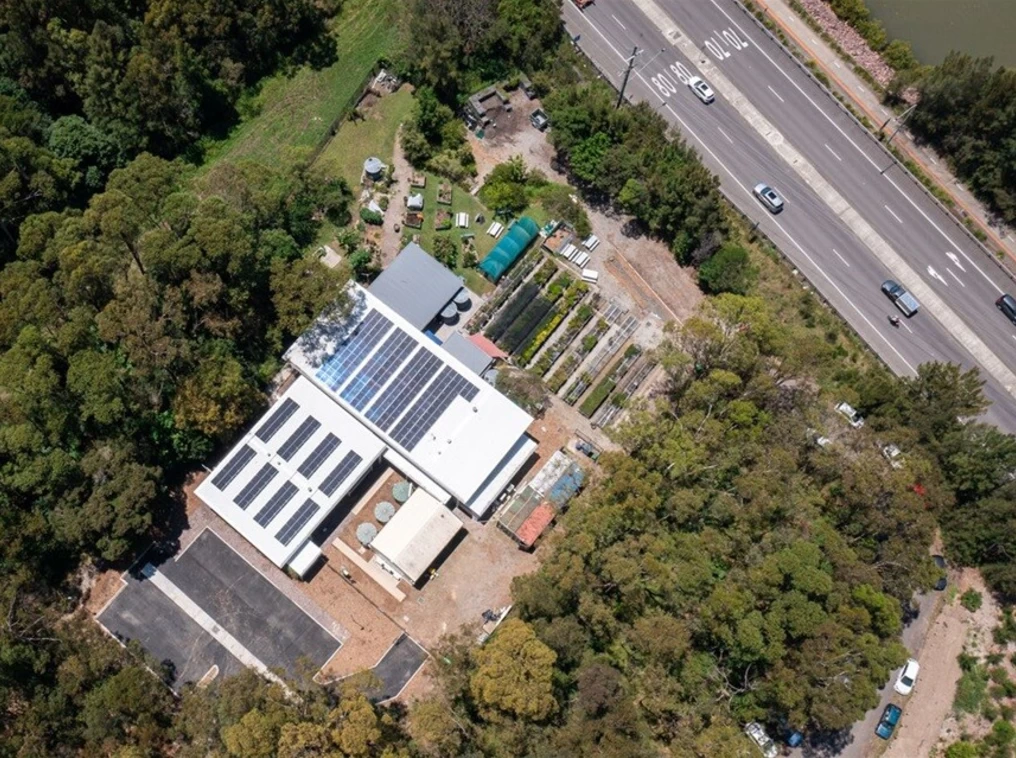Rehabilitating the land with animals
HOGS July Field Day: Grace Springs Farm
'We are soil & grass farmers' says Virginia, as she weaves her way through the paddock, pointing out grass types and the beneficial weeds.

Kulnura, a small town north of the fertile Mangrove region of the Central Coast, consists of a school, a pub and a general store. The Malls selected a property of 25 acres here four years ago as they relocated from Sydney to grow their own food. Their son, at the time a toddler, was diagnosed with Leukaemia prior to the move, and in a search for answers they realised the value of quality healthy nutrient dense food to their family’s health. They filled their backyard and a neighbours with vegetable plants, and when that wasn’t enough, they sought more. There is a tall grove of conifers between the house and the road. Virginia comments that they keep them to dissipate the smell of the nearby commercial chicken farms. Unlike their neighbours, their pastures are full of trees, providing biodiversity and habitat for beneficial animals to inhabit. Grace Springs Farm was, when they took it on, meters high in shrubby weeds. It was neglected and full of rubbish. They waited and observed the land first. We walk past a long white mulberry, the leaves contain inulin, which is helpful for diabetes. Their plan is to focus on niche markets of high value crops, particularly those that are known for their health promoting benefits. They can’t compete on common crops like tomatoes that are grown cheaply by large commercial farms.

Muscovy ducks sold for meat, common meat chickens and Australorpe x Rhode Island Reds for egg production, graze in their three separate yards made up of 50m of electrical fence (Premier netting). They move them every few days to new pasture, therefore never needing to mow. A key strategy of their farm is to keep capital costs low, all the poultry housing is made of light weight recycled materials that can be moved by one person. The whole farm has been carefully considered to be managed by a single female, with efficiency core to design to fit around the commitments of managing a farmily. The fencing around the cow paddocks is all lightweight plastic posts that hold electrical tape (Kiwi Tech wire $500 for fencing 10acres, posts sourced from Sth Aust CRT). They can easily be installed and moved as required. Tagasaste has gone weedy, a leguminous fodder plant that the Guernsey cows eat like lollipops. The rehabilitation of this farm has been done without machinery. They used animals suited to solving a particular problem. Cattle were placed in one paddock with tough woody weeds which they trampled underfoot. Each year the paddocks come up with a flush of new weed varieties, however instead of spraying or slashing, Virginia simply leaves them be. There is a cycle at play here that we often feel the need to interrupt. However each weed is doing a job. She doesn’t want to pull the paddy’s Lucerne out, they are appearing because the ground is compacted, their long tap root will dig deep to mine subsoil minerals and break up the soil. The chooks defoliate them preventing them from seeding. The cows will self-medicate on the weeds, they know what they need and many provide beneficial nutrients (see Pat Coleby books). After leaving the weeds for a season they go on their own, replaced by more that provide another function. Dung beetles have naturalised on the property, they’re attracted to concentrated manure which they process in 48hrs. This makes the nutrients more bioavailable to the pastures. By relying on animals and use of no chemical applications, this method is rehabilitating the land, and beneficial pasture species are establishing.
Small farmers are not supported by bureaucracy, therefore they are collaborating with local farmers for transportation of animals to and from the abattoirs and selling vegetables via a local coop. Many thanks to the Malls family for welcoming us to their farm.














